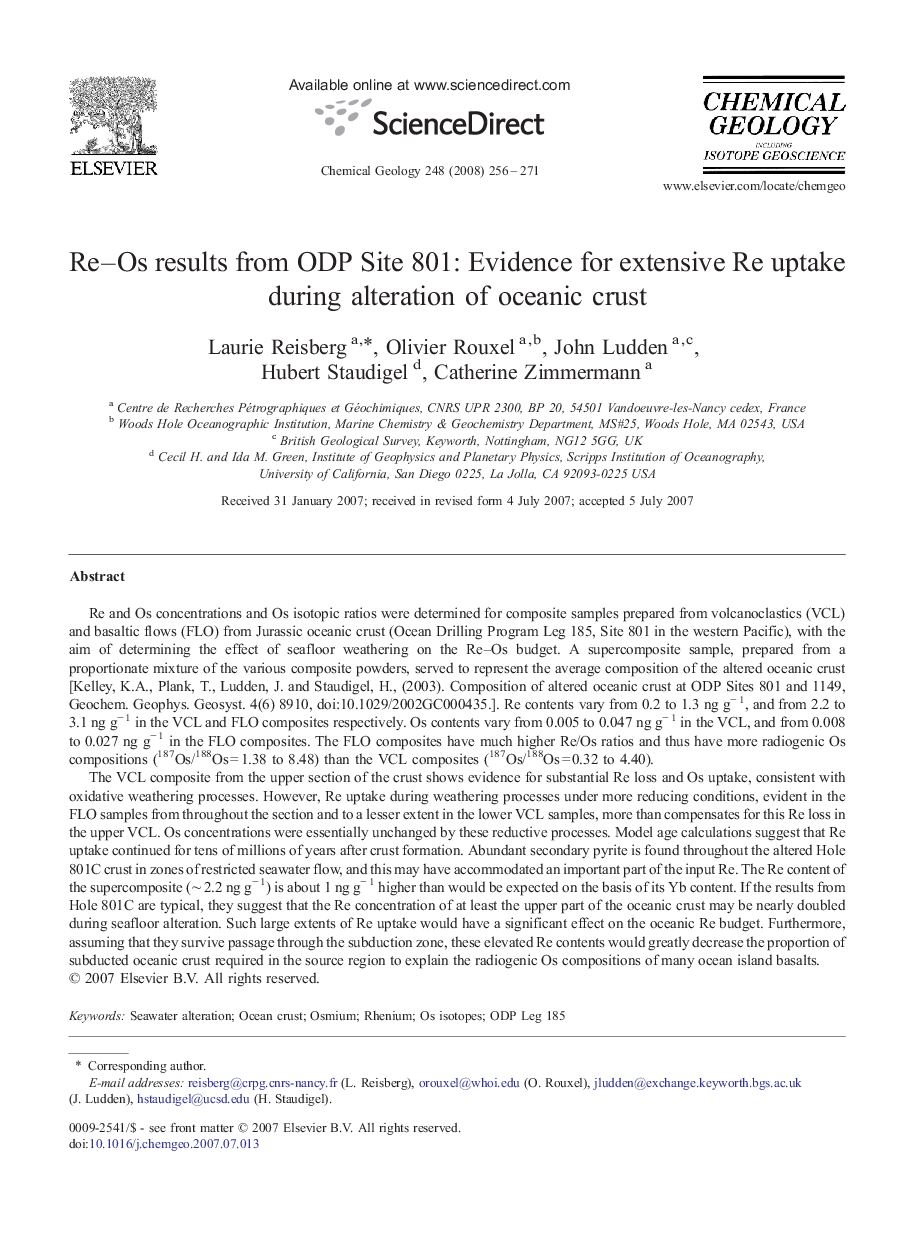| Article ID | Journal | Published Year | Pages | File Type |
|---|---|---|---|---|
| 4700870 | Chemical Geology | 2008 | 16 Pages |
Re and Os concentrations and Os isotopic ratios were determined for composite samples prepared from volcanoclastics (VCL) and basaltic flows (FLO) from Jurassic oceanic crust (Ocean Drilling Program Leg 185, Site 801 in the western Pacific), with the aim of determining the effect of seafloor weathering on the Re–Os budget. A supercomposite sample, prepared from a proportionate mixture of the various composite powders, served to represent the average composition of the altered oceanic crust [Kelley, K.A., Plank, T., Ludden, J. and Staudigel, H., (2003). Composition of altered oceanic crust at ODP Sites 801 and 1149, Geochem. Geophys. Geosyst. 4(6) 8910, doi:10.1029/2002GC000435.]. Re contents vary from 0.2 to 1.3 ng g− 1, and from 2.2 to 3.1 ng g− 1 in the VCL and FLO composites respectively. Os contents vary from 0.005 to 0.047 ng g− 1 in the VCL, and from 0.008 to 0.027 ng g− 1 in the FLO composites. The FLO composites have much higher Re/Os ratios and thus have more radiogenic Os compositions (187Os/188Os = 1.38 to 8.48) than the VCL composites (187Os/188Os = 0.32 to 4.40).The VCL composite from the upper section of the crust shows evidence for substantial Re loss and Os uptake, consistent with oxidative weathering processes. However, Re uptake during weathering processes under more reducing conditions, evident in the FLO samples from throughout the section and to a lesser extent in the lower VCL samples, more than compensates for this Re loss in the upper VCL. Os concentrations were essentially unchanged by these reductive processes. Model age calculations suggest that Re uptake continued for tens of millions of years after crust formation. Abundant secondary pyrite is found throughout the altered Hole 801C crust in zones of restricted seawater flow, and this may have accommodated an important part of the input Re. The Re content of the supercomposite (∼ 2.2 ng g− 1) is about 1 ng g− 1 higher than would be expected on the basis of its Yb content. If the results from Hole 801C are typical, they suggest that the Re concentration of at least the upper part of the oceanic crust may be nearly doubled during seafloor alteration. Such large extents of Re uptake would have a significant effect on the oceanic Re budget. Furthermore, assuming that they survive passage through the subduction zone, these elevated Re contents would greatly decrease the proportion of subducted oceanic crust required in the source region to explain the radiogenic Os compositions of many ocean island basalts.
